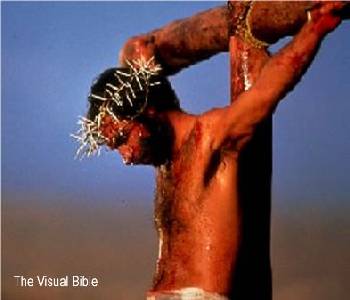From the work of Phlegon we can work out the date of the Crucifixion.
The Crucifixion is widely reported by numerous ancient writers. However, unlike the New Testament, of which there are 25,366 early copies, many of these ancient writer's manuscripts are fragmented.
We do however have important sections of Phelgon's work, which are critical in dating the Crucifixion.
Phlegon of TrallesPhlegon of Tralles was a first century secular Greek historian born not long after the Crucifixion. He inadvertently dated the darkness at noon on the day of Crucifixion in his work, The Olympiades.
Phlegon's greatest work was the writing of a history book, called The Olympiades. The Olympiades can be used as a useful means of establishing a time-line.
We only have fragments left to us of this monumental work and quotations of it from other writers.
One such quotation is as follows,
"In the 4th year of the 202nd Olympiad, there was a great eclipse of the Sun, greater than had ever been known before, for at the sixth hour the day was changed into night, and the stars were seen in the heavens. An earthquake occurred in Bythinia and overthrew a great part of the city of Nicæa."Africanus quoted a section of Phlegon's work as follows:
"During the time of Tiberius Cæsar an eclipse of the sun occurred during the Full Moon."We believe that the period of darkness referred to by Phlegon is the same period of darkness referred to in the New Testament, since the event is unique.There is only one period of darkness lasting for three hours in the history of the world. - We believe that the event referred to by Phlegon is the same event that is recorded in the New Testament.
- The timing of this "eclipse" referred to by Phlegon is similar to the event described in the Gospels.
- Thankfully we have a more detailed fragment from Phlegon's Olympiades:
"In the 4th year of the 202nd Olympiad, there was a great eclipse of the Sun, greater than had ever been known before, for at the 6th hour the day was changed into night and the stars were seen in the heavens. An earthquake occurred in Bythinia and overthrew a great part of the city of Nicæa." - We know from the Bible that on the day of Crucifixion the Sun was darkened for three hours, and there was a great earthquake.
- As explained, we believe that the darkness referred to by Phlegon is the same darkness referred to in Matthew 27:45.
- From the above statement of Phlegon we can work out the year of the Crucifixion.
The dates of the Olympic Games, recorded in Phlegon's OlympiadIn ancient Greece the Olympic Games were held in the July of the first year of each Olympiad, which was a 4 year period running from July to June of each succeeding year.
The 202nd Olympiad has been calculated to run from July AD 29 to June AD 33. The diagram below will help to clarify this.
The 202nd Olympiad Calender Calculations for the date of the Crucifixion
Calculations for the date of the Crucifixion- Each year of an Olympiad began on 1st July.
- We know that Jesus was crucified in the Spring, at the time of the Passover.
- Phlegon had specifically stated in his Olympiades: "In the 4th year of the 202nd Olympiad, there was a great eclipse of the Sun, greater than had ever been known before, for at the 6th hour the day was changed into night and the stars were seen in the heavens."
- Using the above information we can work out that the period of darkness occurred in 33 AD.
- We can therefore calculate with great accuracy that the three hour period of darkness, and also the Crucifixion, had to be in the Spring of A.D. 33.
- As several of the early Fathers quoted Phlegon, there seems no reason to doubt his word.
- Another historian, Philipon (with Origen), confirms the historicity of Phlegon's statement by writing,
"And about this darkness - Phlegon recalls it in the Olympiads...Phlegon mentioned the eclipse which took place during the crucifixion of the Lord Christ, and no other (eclipse), it is clear that he did not know from his sources about any (similar) eclipse in previous times ...and this is shown by the historical account of Tiberius Caesar." - Therefore the year of the crucifixion is A.D 33.
ConclusionThere is more historical evidence to support the three hour period of darkness, and therefore of the Crucifixion, in 33 AD than almost any other ancient event in history!

















